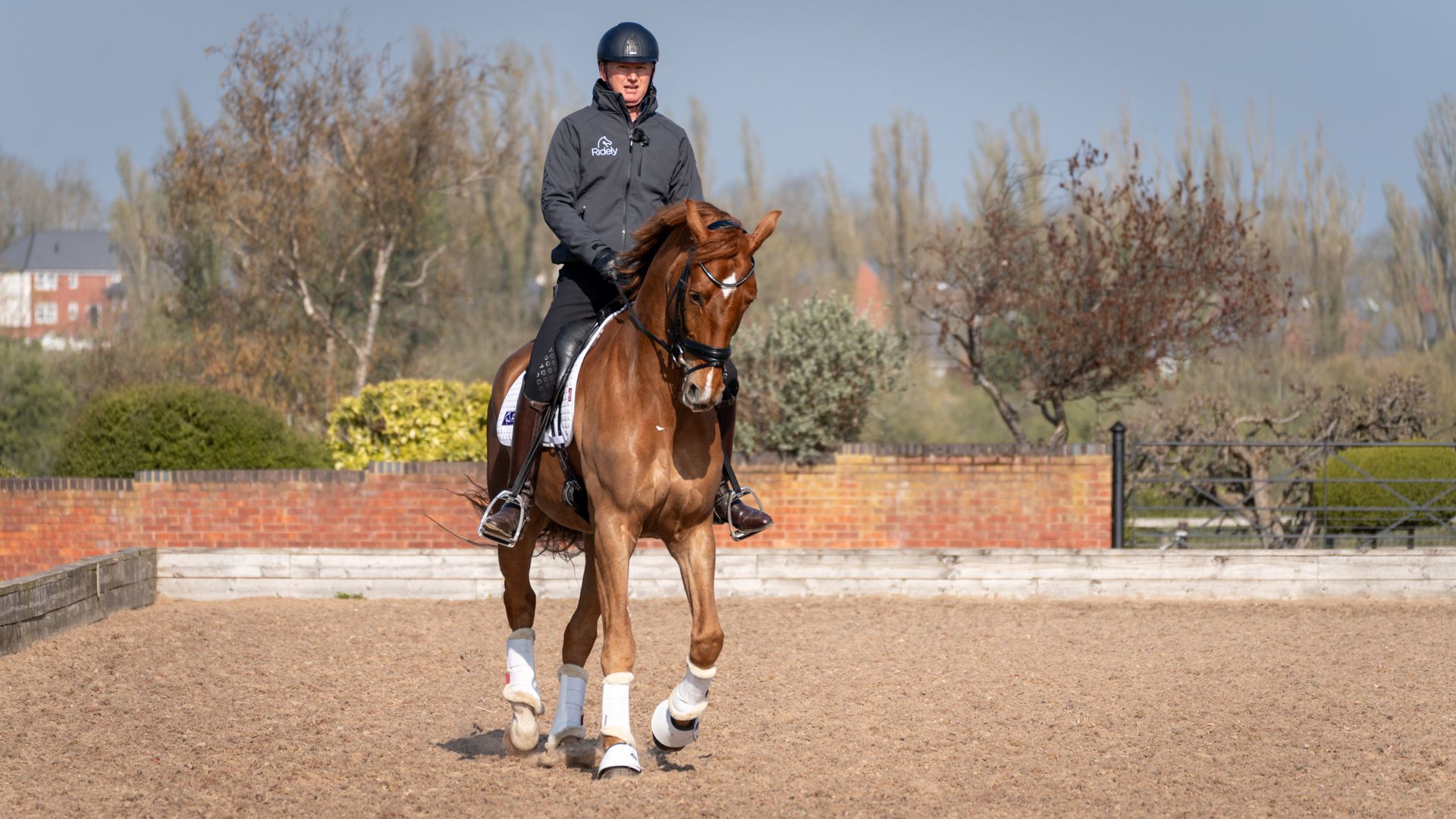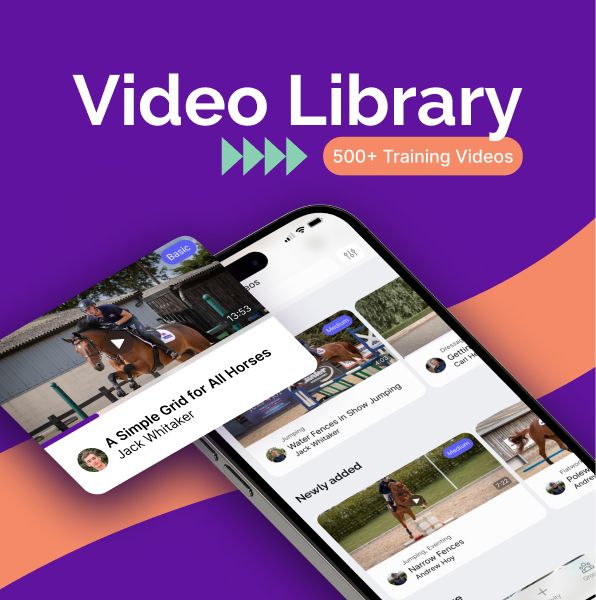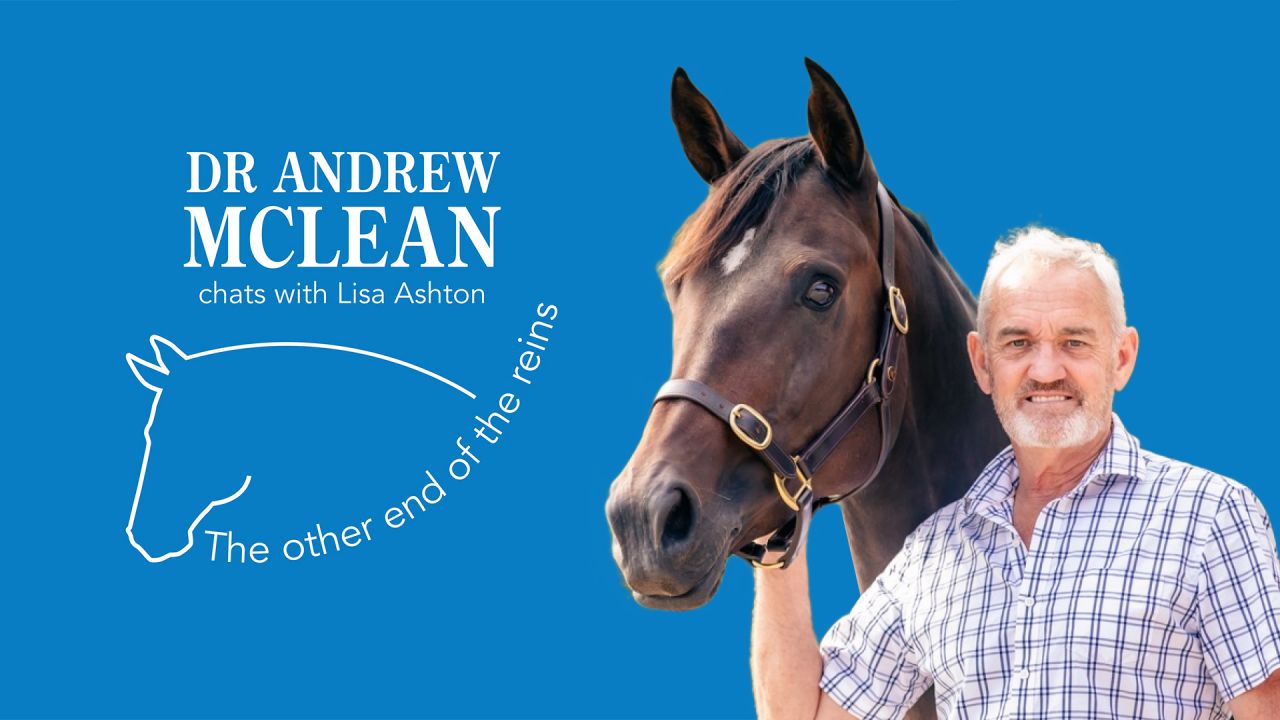How to Ride Shoulder In: Gareth Hughes’ Do’s and Don’ts

Shoulder in is a movement in some dressage tests, but it is also a great exercise to use in training for keeping your horses supple. 2023 European Team Gold Medallist Gareth Hughes guides you through all things shoulder in this article. The aids, how to sit and common mistakes.
Source: How to Ride Shoulder In by Gareth Hughes, in the Ridely app.
Trying Shoulder In for the First Time?
If you or your horse (or both!) is new to shoulder in, you should start in the walk to establish the correct positioning and feel of the movement before progressing to the trot. You should also start by aiming for a very subtle version of the movement. Start by asking for a small or shallow angle. Once you both get this consistently and correctly, you can ask for more angle.
What is Shoulder In and How Do I Get It?
For a good shoulder in, the horse should have his nose slightly to the inside, a subtle flexion through the neck, and the inside shoulder slightly in. The horse should stay on a line and should trot nicely forward through the movement.
How to Ask for a Shoulder In?
To ask for shoulder in, ride your walk or trot nicely forward down a line. Use your inside rein and to ask for a slight flexion, use your inside leg to hold the horse on the line, then bring your hands slightly to the inside to ask the shoulder to come in.
Where to Ride the Shoulder In?
If you find it difficult to move the shoulders to the inside, try riding it slightly off the wall on a ¼ line or centre line. Your outside rein will need to work hard to make sure the shoulders stay up without falling out, but you should find it easier to position the horse correctly. It is a good idea to practise towards a mirror or a friend on the ground to check the positioning.
When you want to finish the movement and reduce the angle, bring your hands back across to the outside to straighten your horse.
How to Position Your Body:
It’s important that your body is in balance with your horse’s to help him keep the positioning and make it easier for him. Try and think about your position in the saddle when riding the movement. Ideally, you need your head in line with his head, your body in line with his body, and your hips in line with his hips. If your body is leaning to the outside for example, you will add weight in the wrong direction throwing the balance off and making it more difficult for your horse.
Common Mistakes:
- Hindquarters out instead of shoulder in. Some riders push the quarters out instead of asking for the shoulder to come in. This means that the hindleg is not engaged and the balance is wrong. If this happens, try decreasing the angle or riding it along a wall so that the hindlegs have to stay underneath the horse and can’t swing out.
- Direction without shaping. Gareth talks about a direction aid and a shaping aid. The direction aid tells the horse where to go: in this case forward along the line positioned with the shoulder in. The shaping aid helps to shape the horse’s body: in this case to the inside with some slight flexion. A common mistake is showing the horse the direction but not shaping him to come around your inside leg. What happens here is the horse is bent the wrong way with no inside flexion.
To watch Gareth Hughes demonstrate and talk about how to ride the shoulder in, join his Training Program in the Ridely app to watch the accompanied video. You’ll learn where to put your legs, hands, weight aids and more, as well as how to nail the perfect position.
Gareth Hughes’ Training Program Highlights 🎓
Learn all of this in Gareth’s comprehensive dressage training program:
- How to Establish a Correct Position: Learn the foundational principles of achieving the perfect riding position, the key to mastering dressage.
- How to Ride Basic Transitions: Discover the art of seamlessly transitioning between gaits and movements.
- How to Ride Leg Yield: Master the lateral movement that demonstrates your horse’s suppleness and your finesse as a rider.
- How to Ride and Sit to Medium Trot: Unlock the secrets of executing the medium trot, a display of control and power.
- How to Ride Rein Back: Perfect the rein back, an essential movement for a lot of dressage programs.
- How to Ride Shoulder In: Explore the intricacies of the shoulder-in, a hallmark of dressage finesse.
- How to Ride Trot Half Pass: Learn the art of executing a half pass at the trot, a test of your horse’s and your own lateral abilities.
- How to Ride Canter Half Pass: Take your skills to the next level with the canter half pass.
- How to Ask for Flying Changes: Finally, demystify the flying changes – a movement that leaves audiences in awe.
Many of us know what different movements should look like, but how to ride them is another story! We asked Gareth to explain the specific aids for each movement.
Take advantage of the 7 day free trial to see how you like it. Get the app and join the program here!

- Train with 10+ Olympians from home.
- Learn and make the most of your equestrian life.

Learn from Carl Hester in Ridely!
Exclusive training videos with top trainers and riders like Carl Hester are available in the Ridely library. Don’t miss out!


